Measurements and quality controls on diamonds
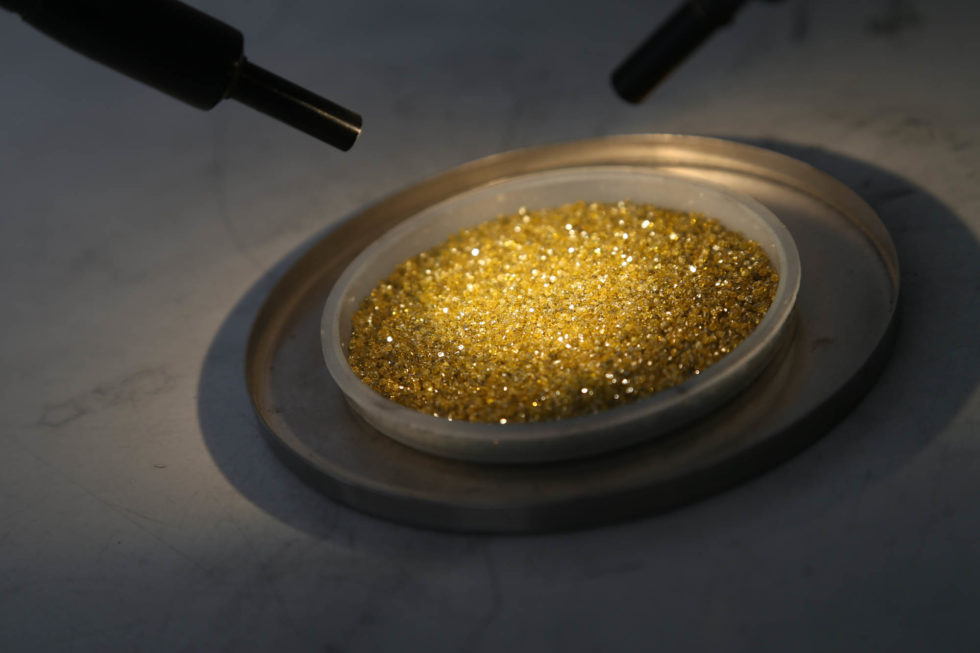
As diamond is THE main component of a diamond tool, diamond selection is key! Since diamond works in the front line during cutting, choosing the right diamond for an application can save a bad matrix.
This is why Diarotech only works with premium grade diamonds that satisfy the strictest quality controls.
Morphology control
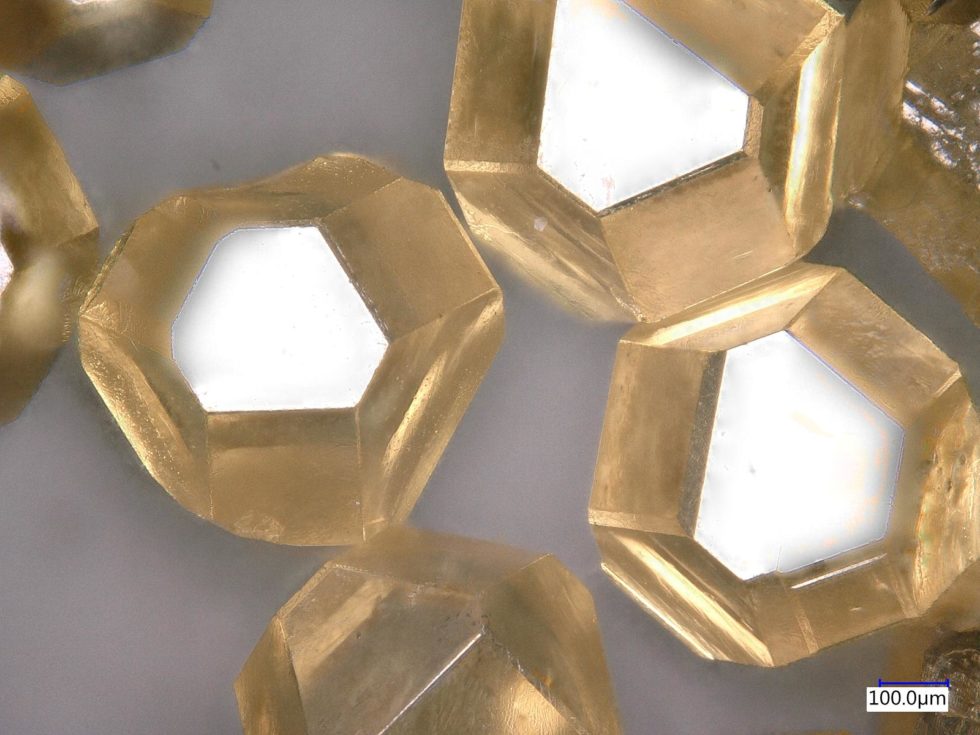
The most perfect diamond shape is that referred to as “regular cubo-octahedron”
This morphology offers the best mechanical resistance by avoiding stress concentrations and therefore crack initiation.
In addition, its regular shape allows for uniform distribution and optimal retention of the diamonds in the tool.
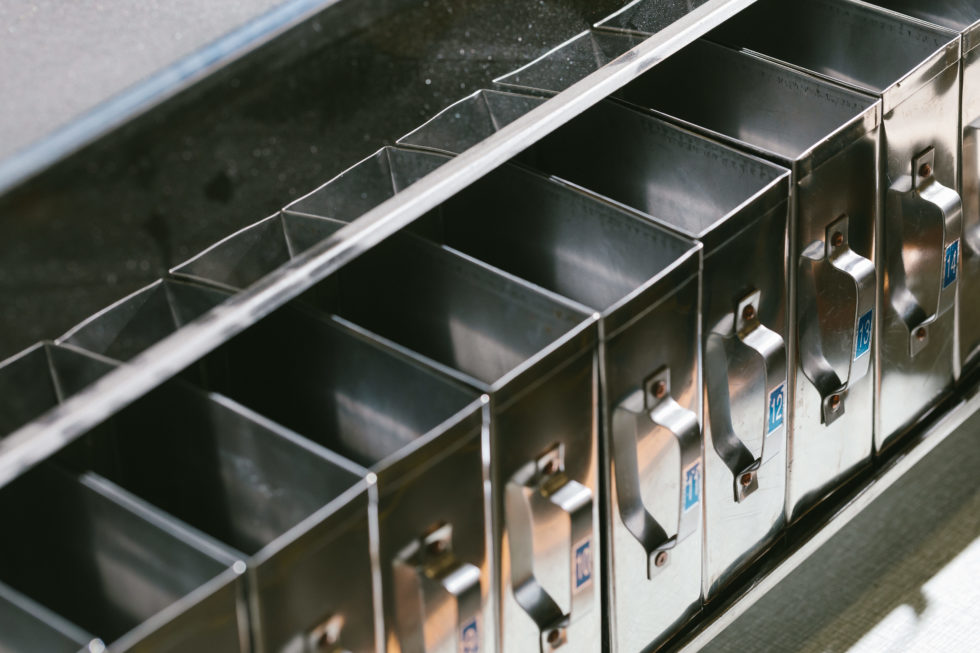
These diamonds are selected using a vibrating table, where the cubo-octahedrons, close to spherical in shape, quickly roll into the first bins collected, while the more irregular or less spherical morphologies pass more slowly and are discharged into the last bins.
The result is controlled by high-resolution 3D optical microscopy.
Control of granulometric distribution
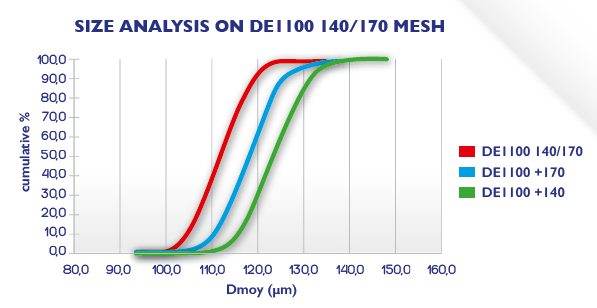
Achieving as narrow a granulometric distribution as possible is extremely important. The application and the rock being drilled determine the size and concentration of diamond. During the manufacturing process, a precise concentration by volume is therefore targeted. However, at a fixed concentration by volume, the gap at nominal diamond size can have a major influence on the number of diamonds in the tool.
This is shown in the graph below. The number of diamonds per carat changes exponentially with their size
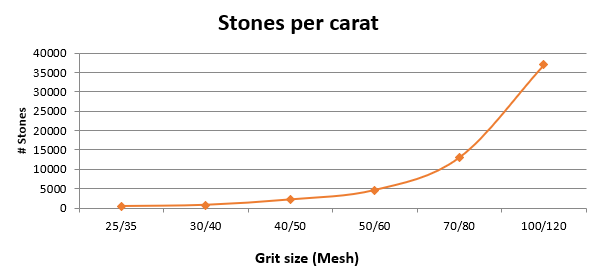
In addition, a controlled granulometric distribution once again makes it possible to obtain a uniform distribution of diamonds in the tool.
This fine granulometric distribution is obtained by rigorous sieving using standardized sieves of similar sizes.
Finally, the granulometric distribution is controlled by two different methods:
Sieving and weighing or Counting and measurement by optical microscopy
Control of chemical purity

Since the 1990s, mainly synthetic diamonds have been used in tool manufacturing for economic reasons.
These diamonds are synthesized via a high-pressure high-temperature (HPHT) process that requires the introduction of chemical catalysts to obtain the diamonds. These catalysts and other chemical species show up as contaminants in the diamonds obtained.
These contaminants are ultimately harmful to the mechanical properties of diamonds and their temperature resistance. This last point is particularly critical for the diamond’s resistance to graphitization during the manufacturing of diamond tools (sintering, brazing, infiltration, etc.). This graphitization is itself responsible for a reduction in mechanical properties.
Two methods enable these aspects of chemical purity and graphitization of the diamond to be controlled.
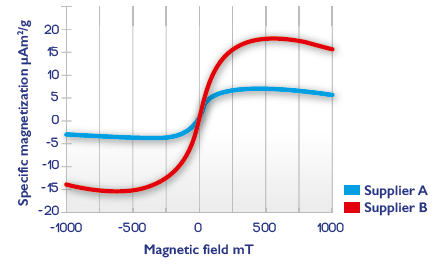
Measurement of the magnetic susceptibility of the diamond and magnetic sorting
Most contaminants present in diamonds, such as iron or nickel, are ferromagnetic compounds (attracted by magnets) while the diamond itself is diamagnetic (insensitive to magnets). A measurement of the magnetic susceptibility of the diamond therefore makes it possible to have a good estimate of the purity rate of the latter.
Thus, in the example opposite, we can conclude that the diamond from supplier A contains less contaminant. This diamond will have better mechanical properties and will be less susceptible to graphitization during the Diarotech manufacturing process.
Also, it is possible to select, within a batch, the purest diamonds by magnetic sorting.
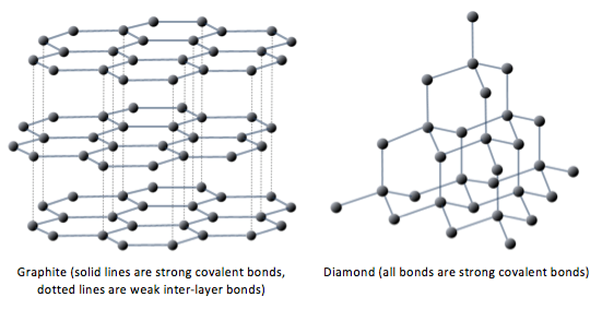
Measurement of the level of graphitization
Diamond is an allotrope of carbon, in which each carbon atom is bonded in three directions to 4 other carbon atoms. This allotrope is referred to as metastable and tends to transform into the stable form of carbon: graphite. Graphite is another allotrope of carbon, in which each carbon atom is only bonded to three other carbon atoms in a plane, forming a sheet structure with very modest mechanical properties.
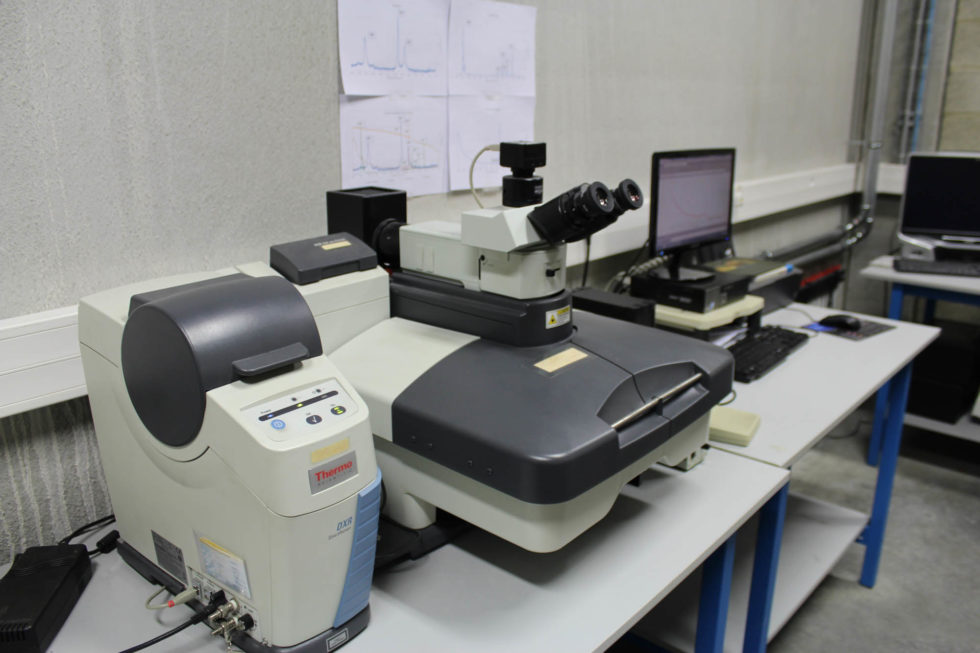
In order to distinguish one allotrope from another, different molecular and/or structural analysis techniques are used. The technique chosen by Diarotech is Raman spectroscopy, which is particularly effective in characterizing the various allotropes of carbon.
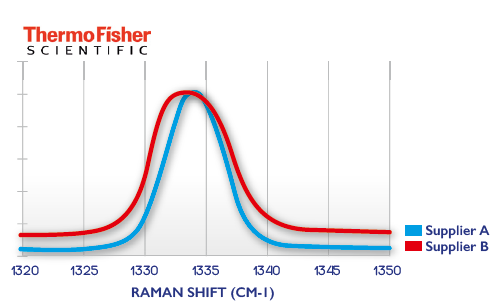
We characterize, among other things, the height, width and offset of the diamond peak at 1334cm-1. In the example opposite, the diamond from supplier B will not be selected, as the peak of the diamond is wider, lower and offset to the left.
We also verify that there is no peak at 1580cm-1 corresponding to graphite.
Control of diamond toughness
One of the mechanical properties required of diamond clearly includes hardness, necessary for good cutting ability. However, the diamond also needs to be tough! That is, resistant to breakage.
Vibratory phenomena appear in all cutting processes that use diamonds. Diamonds that are less tough may break due to these mechanical stresses.
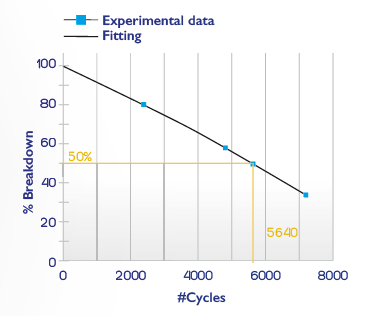
Diarotech uses a “Friatest” to assess the toughness of diamonds. This test consists of placing 2 carats of diamond in a vibrating capsule at 2,400 rpm with a steel ball. The quantity of diamond crushed during the process is assessed at regular intervals by sieving. The number of vibrations required to crush 50% of the diamonds present (1 carat) is estimated by interpolation.
This test can be performed before heat treatment (TI) and after heat treatment (TTI) and on different sizes of diamond
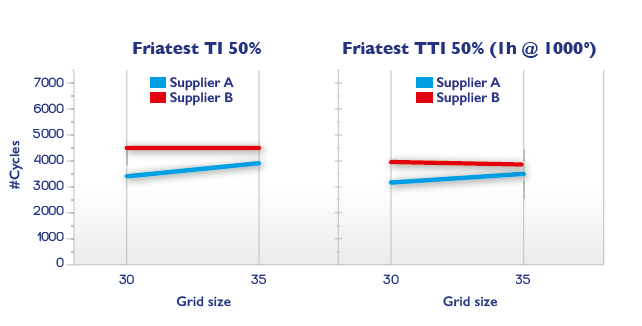
In the above graph showing the results of 8 “Friatests”, we can therefore see that the diamonds from supplier B are tougher than those from supplier A regardless of the size of diamond size tested and whether it is tested before or after heat treatment.
